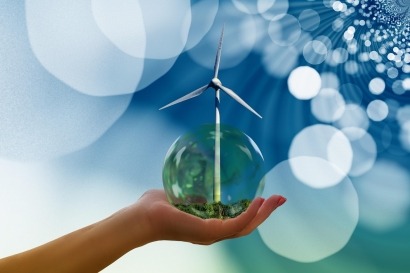
In today’s age, electricity access intrinsically connects to social equity. It impacts the fairness of social policies that deal with education, health, housing and economic security. For example, students can only attend online classes or complete homework on their laptop if they have power.
People need reliable, affordable electricity to access telehealth services, use their appliances and keep their utility bills low. Despite being so vital, it is scarce in many areas. In the United States, one in three households experience energy poverty — an inability to access enough electricity due to financial constraints.
Energy is abundant, so this problem isn’t about a lack of resources. Rather, electrical infrastructure distribution is uneven, adversely affecting historically marginalized communities and neighborhoods with higher poverty rates.
For instance, the country’s 2,000 gas power plants, pipelines and compressor stations — which pollute the air, water and land — are disproportionately in low-income areas and communities of color. Their presence has serious health, economic and environmental implications, which widens the social equity gap.
Energy equality aims to solve this problem by shifting away from fossil fuels and toward renewables. Ensuring people can access their fair share of clean, affordable electricity regardless of race, geographic location, religion, income level or background will benefit all members of society.
The green energy transition and social equity positively correlate. As one improves, so does the other — and vice versa. Decades of research show green energy innovation is essential for creating sustainable, equitable infrastructure. There are several ways it bridges the gap.
Since a person’s surroundings shape their societal outlook, ensuring everyone lives in clean, thriving environments is vital to building a healthy, happy society. Unlike fossil fuels, renewables do not produce pollutants or degrade local ecosystems.
Technology is essential for participating in modern society. Its advancement impacts the entire economy, affecting everything from manufacturing to trade. Since most devices need power, equitable access to electricity ensures everyone gets the same professional and social opportunities.
Solar, wind and geothermal systems can go almost anywhere, democratizing access to sustainable, affordable electricity. Green technologies like photovoltaic panels, microgrids, programmable thermostats and electric vehicles help people access green energy sources.
Fossil fuel pollutants can leach into the soil, escape into the air and leak into the water, poisoning nearby ecosystems and people. Because coal and gas infrastructure are often in communities of color or low-income areas, some demographics experience these adverse health effects more than others.
Energy equality replaces these polluting systems with clean renewables, improving entire communities’ well-being and quality of life. Also, it would make telehealth more accessible, helping them get the care they need even if they live in medical deserts.
The average American household pays around $137 monthly for electricity, which makes up 28% of the utility bill. Green energy innovation enables cost-effective, energy-efficient solutions. Affordable electricity production and distribution could alleviate society’s energy poverty.
A fair energy transition involves ensuring vulnerable and marginalized groups get their fair share of the benefits without taking on a disproportionate risk. For instance, the costs of developing and deploying new infrastructure should not be an inequitable burden.
Crucially, if people direct green energy innovation funding toward large-scale, centralized projects in affluent urban areas, it may not benefit those in rural or low-income neighborhoods. It could even worsen existing social and economic inequalities.
Imagine a city wants to install rooftop solar systems to lower electricity prices during peak loads. People in a nearby rural area use a different power supplier, so they don’t benefit. However, their taxes will still temporarily increase to fund the project, creating an unfair situation. An equitable solution would be to spread photovoltaic panels out or change the tax structure.
This scenario brings another barrier to light — energy literacy. People will only know to demand energy equality if they understand how beneficial inclusive, community-driven projects could be. Local and state policymakers should hold town halls, fund awareness campaigns and create websites that track progress to educate Americans.
Thankfully, the green energy transition is already well underway in many places. However, policymakers and community members should still actively ensure progress is fair. Partnerships between public services, advocacy groups and private utility companies can help. However, technological innovation may be the most valuable.
Today’s solutions are relatively simple, but have still had a significant impact. In Kenya, solar-powered lights enabled women to fish at night, helping them escape the sex trade. Clean, green energy sources allowed low-income families in Mali to cook indoors without exposing them to the harmful pollutants solid fossil fuels produce.
As technology evolves, renewable energy ideas for the future will become more creative. The U.S. might not build fantastical inventions like flying electric cars. Instead, research and development teams will likely focus on making components smaller, quieter or more efficient. The jump from incandescent lights to light-emitting diode bulbs is one example.
However innovation happens, the decision-making process should be inclusive. People should take an active role in shaping the policies that directly impact them. They can begin by calling their local representatives to demand energy equality. Their participation is the only way to shift from a one-size-fits-all solution to a model that respects everyone’s rights and cultures.
The solution for Southerners who rely on air conditioning to get through swelteringly hot summers will look different from the one Northerners come up with. These differences get smaller as the focus shifts from America to individual states, cities and neighborhoods.
Equity is not the same as equality. While equality offers the same toolbox to everyone, equity tailors the tools to individual needs and circumstances. Achieving genuine energy equality requires policymakers and stakeholders to acknowledge and address the unique challenges different communities face. Considering these differences is the only way to create solutions that provide equitable access to energy resources and opportunities.

